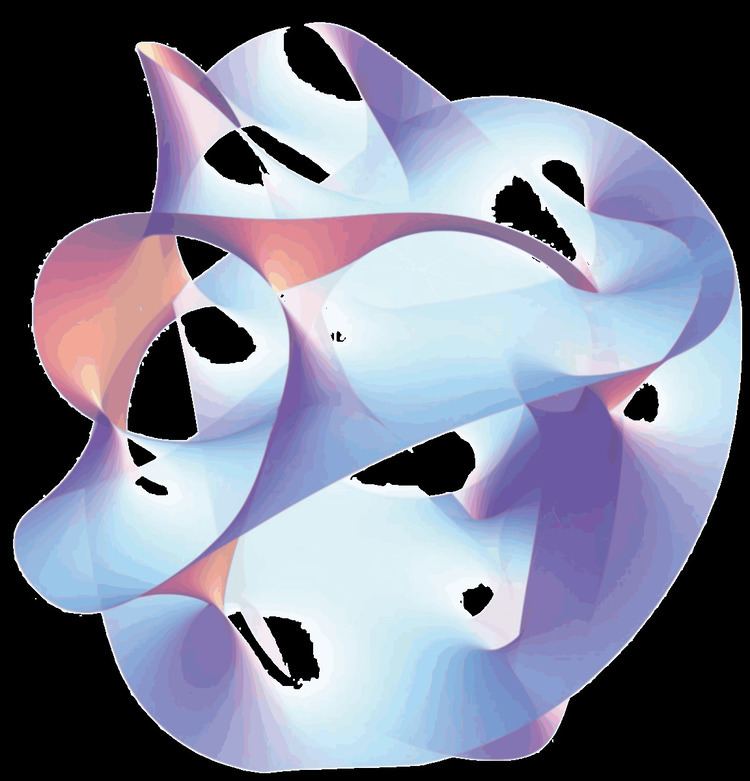 | ||
In physics, the Polyakov action is the two-dimensional action of a conformal field theory describing the worldsheet of a string in string theory. It was introduced by Stanley Deser and Bruno Zumino and independently by L. Brink, P. Di Vecchia and P. S. Howe (in Physics Letters B65, pages 369 and 471 respectively), and has become associated with Alexander Polyakov after he made use of it in quantizing the string. The action reads
Contents
- Global symmetries
- Local symmetries
- Diffeomorphisms
- Weyl transformation
- Relation with NambuGoto action
- Equations of motion
- References
where
The Polyakov action must be supplemented by the Liouville action to describe string fluctuations.
Global symmetries
N.B. : Here, a symmetry is said to be local or global from the two dimensional theory (on the worldsheet) point of view. For example, Lorentz transformations, that are local symmetries of the space-time, are global symmetries of the theory on the worldsheet.
The action is invariant under spacetime translations and infinitesimal Lorentz transformations:
(i)where
The invariance under (i) follows since the action
Local symmetries
The action is invariant under worldsheet diffeomorphisms (or coordinates transformations) and Weyl transformations.
Diffeomorphisms
Assume the following transformation:
It transforms the metric tensor in the following way:
One can see that:
One knows that the Jacobian of this transformation is given by:
which leads to:
and one sees that:
summing up this transformation leaves the action invariant.
Weyl transformation
Assume the Weyl transformation:
then:
And finally:
And one can see that the action is invariant under Weyl transformation. If we consider n-dimensional (spatially) extended objects whose action is proportional to their worldsheet area/hyperarea, unless n=1, the corresponding Polyakov action would contain another term breaking Weyl symmetry.
One can define the stress–energy tensor:
Let's define:
Because of Weyl symmetry the action does not depend on
Relation with Nambu–Goto action
Writing the Euler–Lagrange equation for the metric tensor
Knowing also that:
One can write the variational derivative of the action:
where
If the auxiliary worldsheet metric tensor
and substituted back to the action, it becomes the Nambu–Goto action:
However, the Polyakov action is more easily quantized because it is linear.
Equations of motion
Using diffeomorphisms and Weyl transformation, with a Minkowskian target space, one can make the physically insignificant transformation
where
Keeping in mind that
Substituting
And consequently:
With the boundary conditions in order to satisfy the second part of the variation of the action.
Working in light cone coordinates
Thus, the solution can be written as
